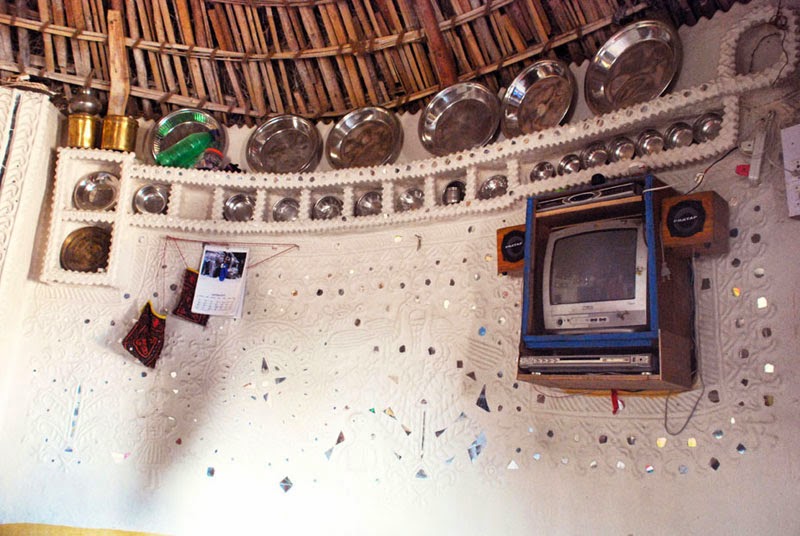'Complexity' is a word we seem to have grown wary of. We are all the time looking to 'simplify' things, all based on our belief that simple is beautiful. It is, indeed. No doubt about that! A Haiku says a lot in three lines. Great 'modern' art and architecture is minimalistic too. In fact, the aesthetic sensitivity of the modern world has moved towards 'minimalism' in every respect. Simple lines, simple forms, limited colour palettes, monochrome, even black and white, for that matter! Modern Indian women shun adornment, except for traditional functions or festivals.Anything more than a stark silhouette and minimum embellishment is ' bling'.
Is that really what the typical Indian aesthetic preference is like? Aren't we a society that likes 'complexity' and 'plularism' in design? All our traditional art forms have subscribed to 'maximalism' Be it clothes, jewelry, architecture, painting, sculpture, or language. Ornamentation is an important part of the Indian aesthetic. Trained in the 'Western' aesthetic value system, Indian designers today have come to believe that simplicity and 'minimalism' are the same thing!
Not true, actually. Something minimal, may not necessarily be good. It can be perfectly ordinary, if not designed sensitively. On the other hand, everything that is complex need not be far from'good'. There is a great beauty to be found in the most complex of designs. Our Embroidery, jewelry, rangoli stand testimony to the simple beauty that shines through the complexity of design. The seemingly complex, is at times, simply beautiful!
Art, Craft and Design
Like these 'Bhungas' or traditional houses of Kutch, Gujarat.Simple in concept and execution, they display great complexity in their 'decoration'. The interior space of the circular mud houses is beautifully decorated with mud plaster and mirror work that covers almost every inch of the space. The built in storage and furniture all come together under an elaborate surface treatment, as simple as it is complex!
These bhungas have withstood the extremes of climates, and the seismic forces in the arid deserts of kutch, keeping the inhabitants comfortable and safe for centuries.
Everything about the `bhungas' is an art. Their outer walls are painted with mud colour motifs by women of the house every year during Diwali and exquisitely carved wood line the inner walls inlaid with mirrors.

Their thick walls keep the interior cool when the temperature rises to 46 degrees celsius in summer and warm when it drops to two degrees in winter.
Watch the video, to see how this seemingly complex art is produced with simple materials by simple people!
Credits and source of information
'Bhunga': Kutch's engineering wonder
'Bhunga': Kutch's engineering wonder
| http://www.thehindu.com/2001/02/26/stories/0226000g.htm Habitats of Kutch – Bhunga Documented by Professor Nina Sabnani, Industrial Design Centre (IDC), IIT Bombay, http://www.dsource.in/gallery/gallery-0590/index.html |








No comments:
Post a Comment